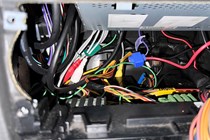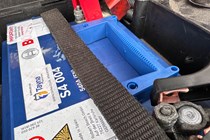It’s a scenario that most drivers will encounter at some point – turning the ignition only to hear the starter motor spinning aimlessly. While it could simply be a matter of the battery needing a charge, if that doesn’t solve the issue, it’s likely time to replace the battery. However, a failing battery is often preceded by a series of clues. By recognizing these early signs, you can save yourself a lot of hassle.
It’s worth noting that a car battery is a consumable part that wears out and eventually needs replacing with a new battery. It’ll last longer if you use and maintain your car regularly, but not forever. Car batteries are generally very reliable and robust, though, especially those in the latest cars that have to power everything from the spark plugs to the infotainment system to the heated armrests. Yes, some cars, like the Mercedes-Benz S-Class, offer luxurious amenities like heated armrests!
Yes, there really are cars with heated armrests!
In this guide, we’re going to explain all the warning signs that indicate a car battery is about to die, so you’ll know when it’s time to get a replacement. We’ll also provide tips on simple maintenance tasks you can do to make sure your car’s battery stays in good health for as long as possible.
How does a car battery work, and fail to work?
If you remember school chemistry lessons, you’ll know that a battery contains metal electrodes and an acid solution electrolyte. The reaction between the metal and solution generates electrons which are discharged from the battery as electricity. In a car battery, the electrodes and solution are contained in a robust plastic box.
Lead-acid batteries are commonly used in cars because they have a high electricity storage capacity, are resistant to big changes in temperature and can provide reliable service for many years. They’re also relatively cheap to make and easily recycled.
In a well-maintained car, a battery generally lasts seven to 10 years. However, problems with the car’s electrical system that require regular jump starts and recharging can shorten its life. Other causes of battery failure include a lack of water in the electrolyte, corroded electrodes and overheating.
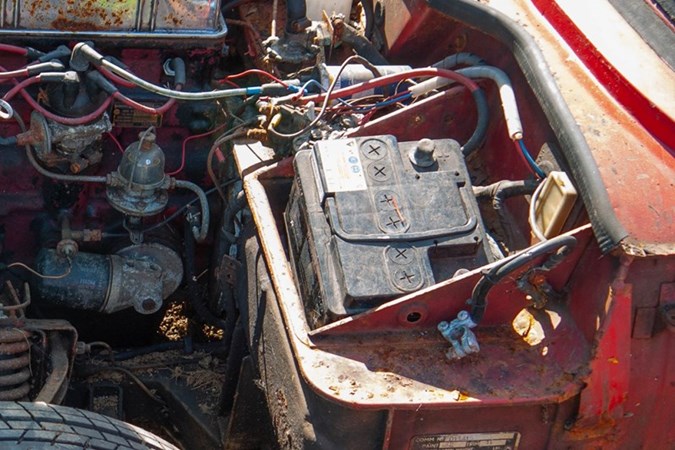
How do I know if my car battery is dying?
Unexplained alarms
If your car’s alarm routinely goes off for no apparent reason, it could actually be drawing your attention to another problem. In some cases, the alarm’s back-up battery has failed or, more likely, the control box has developed a fault – either it could be draining the car’s main battery. As the voltage falls, the alarm is triggered. If the alarm stops sounding, it could be the battery is too flat to power it. This can be a particular problem with aftermarket alarms that weren’t fitted properly.
Flickering LEDs or frequent blown bulbs
Dim dashboard and interior lights are a strong indicator that the battery isn’t providing enough charge to power a car’s systems and could be on its way out. And a battery short circuit can cause the alternator to put out too much electrical current, blowing headlight bulbs before they would normally expire.
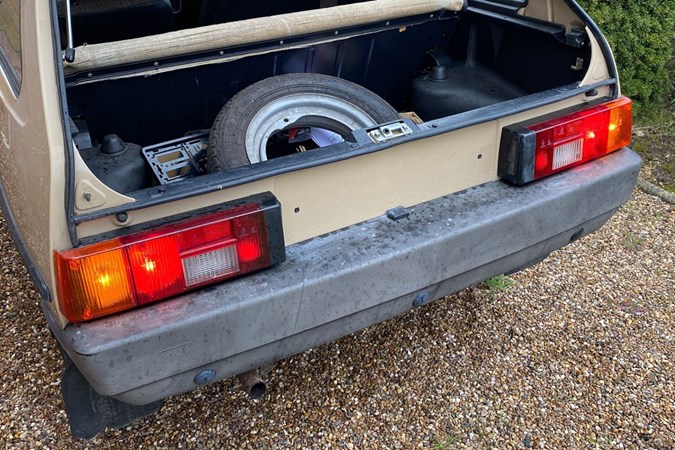
Dim lights, slow fans and windows
As with interior lights, exterior lights, particularly the headlights, become dim if the car’s battery is faulty. That could be a big issue because you’ll likely only notice dim lights when driving at night and it could get to the point that they aren’t providing enough illumination to drive safely. Heater fans and electric windows operate more slowly than normal if there isn’t enough power in the battery, as well.
Misfiring or a sudden loss of power in petrol cars
There are many potential causes for an engine not providing as much power as usual or running rough with a misfire and they include a failing battery. Most new batteries have a long warranty and reputable retailers such as Halfords will check the existing battery for faults before selling you a new one. A smart battery charger can also indicate any faults. It’s worth pursuing those avenues first if your car’s engine isn’t running right because they’re much cheaper than having a full diagnostics check carried out. Alternatively, you can get a fault code reader that plugs into your car’s OBD-II port and should tell you what the problem is.
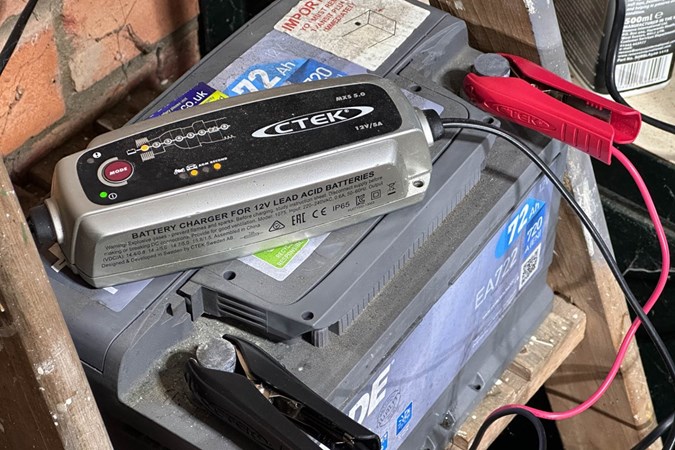
Your car tells you the voltage is low
Most modern cars let you sit with the engine off but the ignition on to listen to the radio or have the heating on. After a period of time – usually around 20 minutes – the ignition will automatically switch off, or you’ll see a message saying something like ‘battery conservation mode’. You may even get a text message if you have the car’s app on your phone. If this starts to happen quicker than normal, the battery is holding less electricity.
The starter motor is slower than usual
If your car’s engine is less keen than usual to burst into life, there’s a long list of potential causes but the first thing to investigate is the health of the battery. The starter motor needs a lot of electricity to get the engine going and a battery that’s lost even a small amount of charge might not be up to the task.
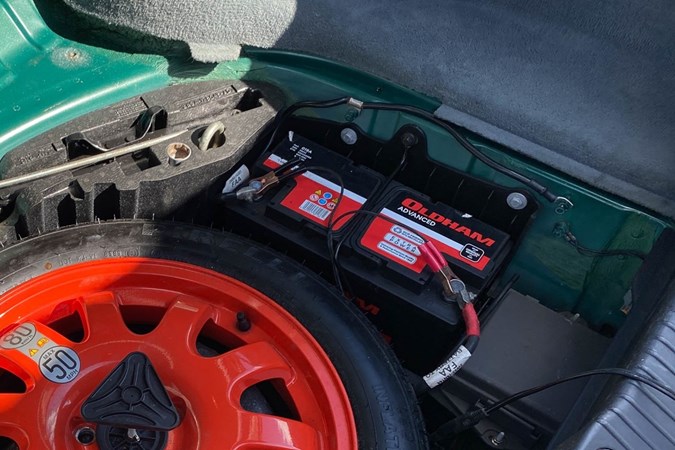
How do I monitor the state of my car’s battery?
The alternator is a car’s built-in battery charger. A healthy alternator puts out around 14.1 to 14.7 volts, as much as is needed to keep the battery fully charged. If the voltage falls below 14, you may start to notice the car’s electrical equipment not working properly; below 12V and the car will struggle to function at all. If that’s the case, it’s likely the battery is failing. You can monitor the state of the battery with a cheap and simple voltage reader.
How can I maintain my battery?
The best thing you can do to maintain the health of your car’s battery is keeping it fully charged. The easiest way of doing that is to simply drive the car regularly. But, if the car is going to be sat at home for long periods, it’s best to hook up a trickle charger that feeds in a small amount of electricity as needed. Smart chargers can also condition the battery, clearing any gunk and corrosion from the electrodes. If the car is parked outside, a solar battery charger is a good option. Find out more battery maintenance tips.
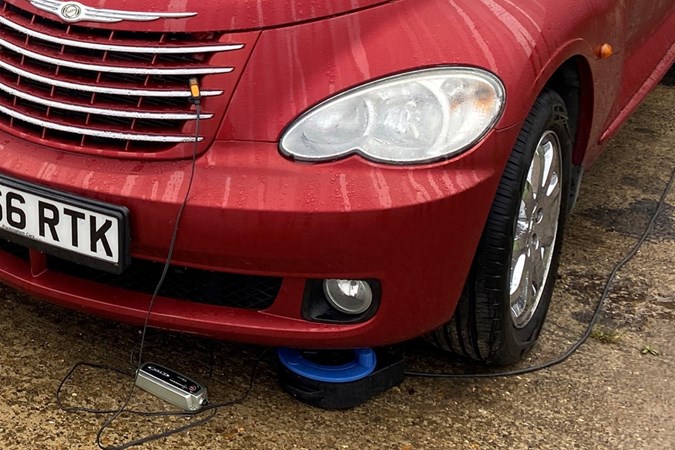
Do I need a new car battery or just a charge?
A flat battery isn’t necessarily a dead battery. If you left your car’s headlights on overnight, the car may not start but the battery will be fine once it’s recharged. You can do that by jump-starting the car then going for drive, or by hooking it up to a battery charger. If the battery is persistently going flat, recharging it every time will bring it back to life, but only temporarily. Ultimately, the battery is failing and needs replacing.
What else can I do to prevent my car battery failing?
There are some quick and easy maintenance tasks you can do to help make sure your car’s battery stays healthy for as long as possible. Look out for frayed and damaged wiring, and loose battery cables which could cause power loss that drains the battery. The clamps and terminals on the battery should be in good, clean condition, as well.
You may be able access the car’s alternator belt to feel if it’s tight. A slack belt often squeals when the engine is running. If the belt is loose, the alternator won’t be able to charge the battery properly. Another noise to listen out for is a scraping or grinding noise that could indicate failing alternator bearings.
Fitting accessories like an upgraded stereo can increase the load on a battery, making it more likely to fail. Hardwiring a dash cam into the car’s electrics can cause the battery to drain quite quickly, as well. Tow bar electrics can also cause problems if they become dirty and corroded – packing the trailer connectors with petroleum jelly or using terminal protection spray can avoid that happening.

How do I know when my car battery needs replacing?
Follow the guidance above and you should be able to tell when your car’s battery is likely to need replacing. If you know when the battery was installed in the car, see if you can find out how long its warranty lasts and when it will expire. It’s likely the battery will fail within a few years of that date.
What about my electric car battery?
Electric cars have two batteries – the so-called traction battery that powers the electric motors, and a conventional 12-volt battery that powers the on-board electrics like the lights, air conditioning and infotainment system. The latter is exactly the same as the 12-volt battery in any other car and will give the same warning signs that it’s failing. But there are different signs to watch out for that indicate the traction battery is failing.

The electricity storage capacity of a battery reduces over time. If you notice that your electric car is taking less time to recharge and/or providing less range than normal, that’s a sign the capacity of its traction battery is falling. Every EV manufacturer provides a battery warranty that typically lasts eight years or 100,000 miles, whichever comes first. If the traction battery’s capacity falls to 70% or less of what it should be in that time, the manufacturer will replace the battery free of charge.
Just so you know, we may receive a commission or other compensation from the links on this website - read why you should trust us.






